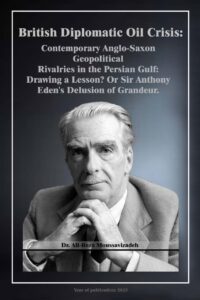The British Imperial Establishment, Post Imperial Era, and the ‘Churchillian’ World View, 1945-2016. (Adjustments & Challenges in Contemporary British Diplomatic Strategy)
58
representatives were put on various British boards and agencies. “The
constitutional changes
underlying this assertion of national independence and
whittling down of the supremacy of the British
parliament were formulated in
various conferences during the 1920s. In particular the Balfour Declaration
of
1926 (as to the nature of dominion status) and the subsequent Statute of
Westminster of 1931 gave the
British Constitutional seal to the demands of the
Canadian, South African and Irish governments for full
Dominion competence.”32
Thereafter, for instance, the governor
general of a Dominion came to be
acknowledged as a representative of the Crown and not of the British
government.
Thus the power officially vested in his office was merely ceremonial and seldom
implemented.
“In future, British legislation applied in a Dominion only at the
latter’s request and consent while
Dominion legislation would not be invalid
because it was repugnant to a British statute. Even so, a few
limitations on
constitutional competence persisted – for example, to some of the Constitutions
creating
federations, especially where it was intended to protect or entrench
certain interests or
rights.”33 South Africa on the other hand took up a position
of
extreme constitutional independence, acquiring in the 1930s the right to secede
or become a
republic.
The
Dominions i.e: Australia, Canada, New Zealand, South Africa, Irish
Free State and Newfoundland were for a few
years accepted by the British
government as states of full autonomy and equality with Britain.
The
Commonwealth of Nations was seen as this group of nations freely
associating and linked by a common
allegiance to the Crown, but in reality all
was not in harmony. The solution which the British government
devised in the
1920s for the Irish troubles was never satisfactory (namely the Irish Free State or
Eire
as it later came to be known). In the 1930s it increasingly went its own way.
In South Africa, Afrikaner
nationalism was growing in intensity and, taking
advantage of the status of independence, brought in racial
policies discriminating
Pages: 1 2 3 4 5 6 7 8 9 10 11 12 13 14 15 16 17 18 19 20 21 22 23 24 25 26 27 28 29 30 31 32 33 34 35 36 37 38 39 40 41 42 43 44 45 46 47 48 49 50 51 52 53 54 55 56 57 58 59 60 61 62 63 64 65 66 67 68 69 70 71 72 73 74 75 76 77 78 79 80 81 82 83 84 85 86 87 88 89 90 91 92 93 94 95 96 97 98 99 100 101 102 103 104 105 106 107 108 109 110 111 112 113 114 115 116 117 118 119 120 121 122 123 124 125 126 127 128 129 130 131 132 133 134 135 136 137 138 139 140 141 142 143 144 145 146 147 148 149 150 151 152 153 154 155 156 157 158 159 160 161 162 163 164 165 166 167 168 169 170 171 172 173 174 175 176 177 178 179 180 181 182 183 184 185 186 187 188 189 190 191 192 193 194 195 196 197 198 199 200 201 202 203 204 205 206 207 208 209 210 211 212 213

